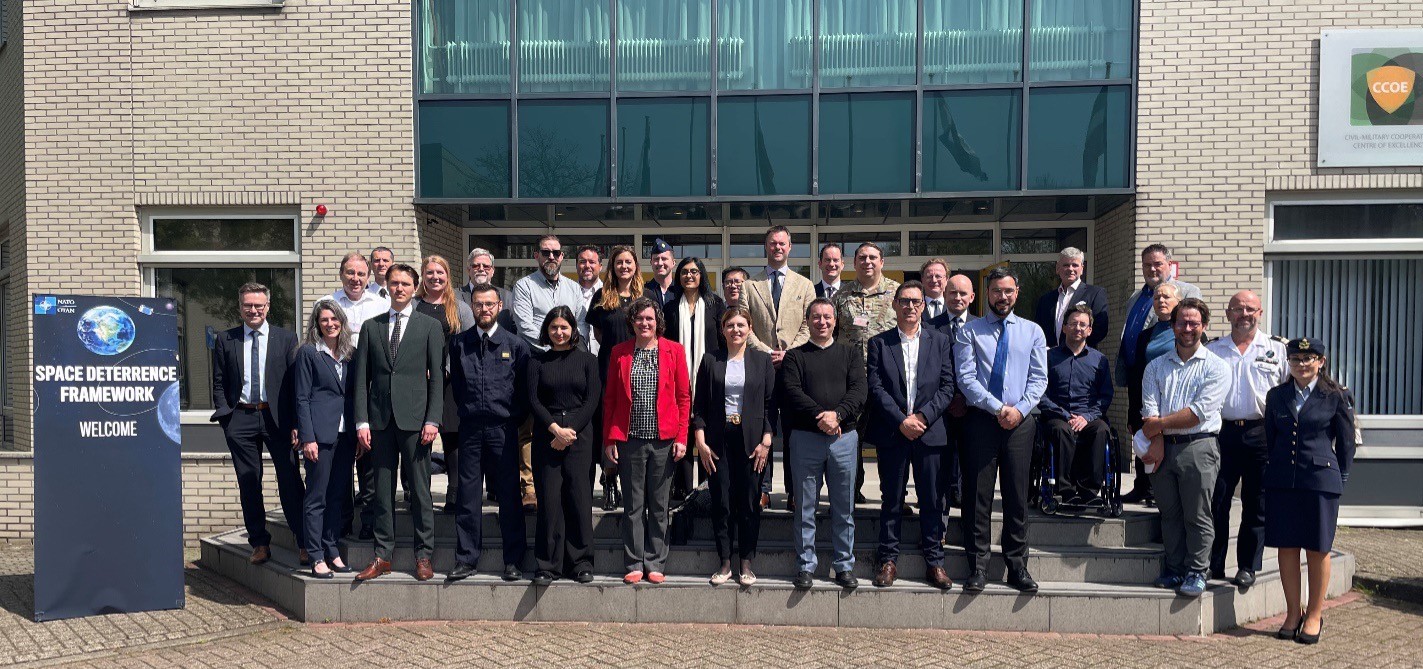Press Release
Johns Hopkins APL Supports NATO STO Multi-Domain Space Deterrence Wargame
A team of researchers from the NATO Science and Technology Organization (STO) and Headquarters Supreme Allied Command Transformation (HQ SACT) carried out a wargame on space deterrence last month, bringing together 37 participants from nine NATO nations. The Multi-Domain Space Deterrence Framework 2024 wargame was held April 29 - May 2 at the Majoor Jan Linzel Complex in The Hague, and was hosted by the Dutch Ministry of Defence (NLMOD) - Royal Netherlands Air Force - Space Centre.
Formed under the NATO STO Systems Concepts and Integration (SCI) and System Analysis and Studies (SAS) Panels, the team (SCI-SAS-351) was created to develop and test a comprehensive space deterrence framework. Such a framework would employ a full spectrum of deterrence options as well as both national and NATO instruments of power.
Space underpins NATO’s deterrence and defense missions, including the ability to navigate and track forces, position and target assets, and gather intelligence for informed decision-making. Space also enables the world economy, and its economic importance will continue to grow with future space travel and commerce. As the space domain becomes more contested and congested, there is an increased need to ensure its responsible use and protect space assets from growing threats. Aggressive acts to interfere with space systems can span a range of tactics — including gray zone tactics — and may involve weapons and dual-use systems capable of impacting space assets.
To respond to these challenges, the SCI-SAS-351 team and HQ SACT have partnered to run a series of wargames with Allied decision-makers and policymakers. The deterrence framework they are developing would include procedures to deter and respond to nefarious acts, strengthening the cohesion and cooperation among Allies and partners.
At last month’s wargame, national decision-makers experienced a series of evolving vignettes in the 2040 time frame. Faced with a wide range of dilemmas in a future “fragmented world,” they developed integrated strategies to deter unfriendly and hostile activities, constrained by both time and varying levels of uncertainty.
This is the second time Susanne Wirwille, a research analyst at the Johns Hopkins Applied Physics Laboratory, has served as the NATO task group chairman and the director of the wargame.
“The national players were transported to a future environment with enhanced space capabilities,” said Wirwille. “Players from political and military leadership positions employed their national strengths to generate an orchestrated approach to deter threatening and hostile behavior against allied space capabilities, carefully navigating international law and national policies.”
Going forward, the team plans to analyze the wargame results and distribute an executive level report this summer. The NATO Science and Technology Board has chartered the SCI-SAS-351 team to continue through March 2026.
